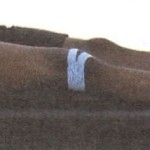Taping Rehabilitation (Rehabilitation slices), is used widely in sports, where he gained great popularity and in rehabilitation, where he is an excellent tool to assist conducted therapy. These patches show high therapeutic efficacy and possess assist motor characteristics of man – Elastic therapeutic tape (Kinesiology Taping) technique for supporting muscles has been banned during the swimming competitions by FINA. On such a ban are considering other sports federations.
Taping Rehabilitation is gaining popularity among patients who have the opportunity to experience themselves the effectiveness of this method. Note, however, that the patches is not a therapy in itself. It should be combined with various exercises, muscle strength, developing a feeling of deep, balance and stability. Taping is no support weakened motor function and not replace it, and thus weaken. The aim is to as quickly as possible, dispense with the supporting role Taping Rehabilitation.
Taping Rehabilitation used various materials bandages, tapes with glue and without glue, sliced elastic stretching of various parameters and patches inflexible. Tape that is glued directly onto the prepared for a patient’s skin (degreased, depilated) and tape stuck indirectly. Slices flexible better suited for supporting therapy musculo-fascial or against lymphatic swelling. Whereas inflexible patches are effective in correcting articular (eg. Posture), and protecting the joints and muscles after injury (eg. The twisted ankle). In many cases, the patches are combined with dynamic non-elastic tapes.
One of the basic methods Taping Rehabilitation is Kinesiology Taping, whose advantages are shown below.
Basic functions of slicing are:
• Protection and support functions of the ligaments
• Support for a specific motor function,
• Lock the wrong direction or at risk in the pond,
• Protection of muscle attachments,
• Myofascial relaxation of tissues,
• Supporting resorption of edema.
General contraindications for Rehabilitation Taping:
• Lack of improving the range of motion and reduce pain after taping,
• Allergy to adhesives used in sliced or mechanical irritation of the skin caused by working patch (itching, redness of the skin under and around the patch)
• Pain, discomfort, bruising, numbness, loss of pulse after taping,
• Acute inflammation,
• Wounds and around the break in the skin,
• Deep vein thrombosis,
• peripheral arterial circulatory disorders,
• Heart failure in stage III and IV by Nych.
Example applications own Taping Rehabilitation:
- Application correction – hyperextension distal phalanx.
- Application stabilization – Immobilization of the abduction of the fingers.
- Application stabilization – Immobilization to the extension in the interphalangeal joint.
- Application fascial – golfer’s elbow (overload rectifiers).
- Application fascial – Inflammation of the tendon of the long head m. Biceps.
- Application correction – correction settings patella.
- Diagnostic application – Plantar fasciitis Ills 1.
- Diagnostic application – Plantar fasciitis Ills 2.
- Application fascial – Plantar fasciitis Ills 1.
- Application fascial – Plantar fasciitis Ills 2.
- Application stabilization – Immobilization of multidirectional ankle (sprains joint) Ills 1.
- Application stabilization – Immobilization of multidirectional ankle (sprains joint) Ills 2.
Kinesiotaping (Kinesiology Taping, Elastic therapeutic tape) – “It is one of the methods of taping. It was developed and popularized in the early eighties by the Japanese dr. Kenzo Kase. Is used in a specially prepared patch – Kinesio Tex (…) is not limited to motion, extending only the length, weight and thickness similar to the parameters of the skin, containing no drug or latex resistant to water, allowing air flow through falowemu weaving. “ (1)
Kinesiology taping method consists in applying the tape on and around the muscles to promote or inhibit muscle tone. It facilitates the natural healing process of the body providing support and stabilize the muscles and joints without limiting the range of motion of the body. Effectively treats orthopedic conditions, neuromuscular, neurological and others.
Basic techniques in Kinesiology Taping Method:
1) Technical support is to simulate muscle contractions in the full existing range of motion.
2) The braking techniques is to reduce muscle tension, eg. In overload syndrome.
Additional techniques – Techniques of Corrective Method Kinesiotaping:
1) A Clockwork used eg. To protect unstable kneecap or shoulder joint,
2) Lymphatic used eg. For faster elimination of bruises and lymphoedema,
3) The tendon used eg. In inflammation of the plantar fascia,
4) fascial used eg. The rigid and tight subcutaneous tissues,
5) Spatial used eg. With bursitis of the elbow, or the pain of the spine,
6) Functional used in corrective basic example. in the correction of ankle or wrist. “(2)
Example applications own Kinesiology Taping:
- Correction lymphocytic – swelling of the upper limb (preserved lymph nodes).
- Correction lymphocytic – swelling of the upper limb after the removal of axillary lymph nodes on the right breast.
- Correction lymphocytic – swelling of the upper limb after the removal of axillary lymph nodes on the right breast.
- Correction Functional in hallux valgus.
- Correction Functional in hallux valgus.
- Correction in Functional hallux valgus correction and spatial inflammation peroneal muscle.
- The braking techniques in congested deltoid.
- Application analgesic during menstruation.
- Application supporting the problems of constipation.
Example applications Kinesiology Taping from other sources (3):
- Trapezius muscle pain. Applications in pain the neck.
- Trapezius muscle pain. Applications in pain the neck.
- Pain in the deltoid and shoulder – application.
- Pain in the deltoid and shoulder – application.
- Pain in the deltoid and shoulder – application.
- Pain in the deltoid and shoulder – application.
- Tennis elbow
- Corrections mechanical in patellar instability.
- Various applications.
Source:
1. http://pl.wikipedia.org/wiki/Kinesiotaping 2013
2 and 3. Manual KT1 and KT2, Kinesio IP, LLC, 2011 and information Kinesio Poland 2013
4.R. Słoniak, T. Tittinger, Rehabilitation Taping – Taping in rehabilitation and sports, Rzeszow, 2011


































